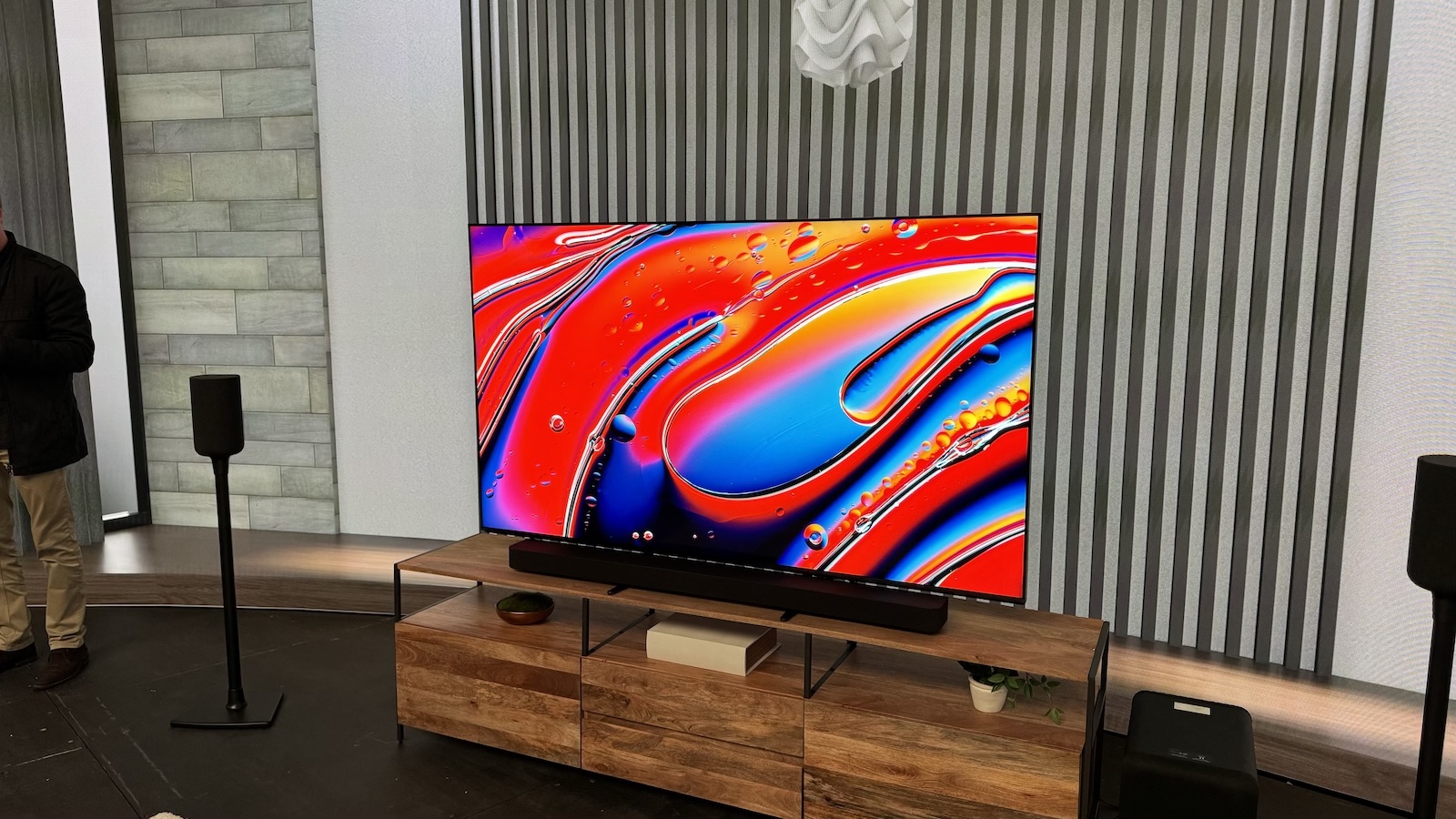
Controversy alert! Sony has just announced its 2024 TV range, and at the very top is not a replacement for the A95L QD-OLED, but a brand-spanking-new, super-bright Mini LED model.
In truth, this development was heavily hinted at when Sony treated me to a demonstration of a super-advanced prototype TV backlight towards the end of last year, but to have it confirmed – along with the fact that the A95L is not going to be replaced this year – is still one of those big, potentially landmark moments in the TV industry.
The TV in question is the Bravia 9 which, along with a shift in premium TV tech priorities, also spearheads a more streamlined and simplified range that also includes the Bravia 8 OLED (replacement for the A80L) and Bravia 7 Mini LED (replacement for the X90L) models.
Sony’s argument for developing this new backlight technology and elevating it to the pinnacle of its new range is that it believes much brighter movies are on the way (thanks in part to the recent release of its own 4000-nit mastering monitor) and that brighter TVs are necessary to deliver current movies in home environments with ambient lighting.
Here, though, we’re primarily concerned with whether the new Bravia 9 looks good as a TV in its own right. We will, of course, need to wait until we have a final production sample in our own testing rooms for comprehensive and comparative testing before delivering a final verdict, but I have been treated to a fairly comprehensive demonstration of the Bravia 9 in action, and very impressive it looks, too – though with a couple of caveats.
Price
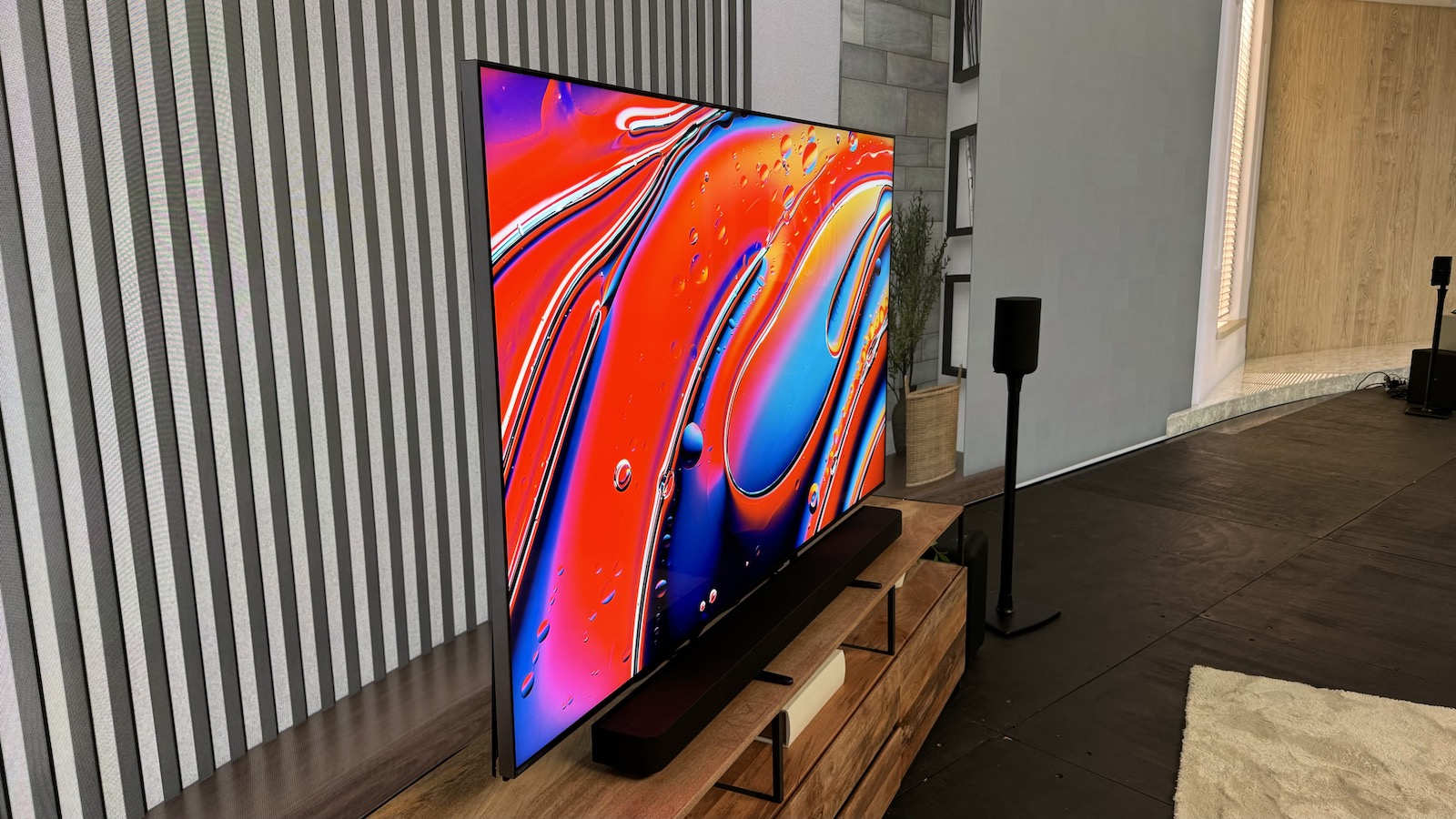
We currently have only UK prices for the new Bravia 9, and it's arguably not as expensive as might have been expected. At launch, the 75-inch model will be £4499 and the 85-inch version will be £4999. While undeniably a lot of money, it's worth noting that the 77-inch A95L QD-OLED was £5999 / $5000 / AU$9495 at launch, so the Bravia 9 undercuts that quite significantly.
On the subject of sizes, the Bravia 9 will be available in a 65-inch size as well as 75-inch and 85-inch versions. However, in a baffling move sure to infuriate many potential buyers, Sony UK has opted not to bring the 65-inch model to good ol’ Blighty. We can only hope that the brand reverses that decision in short order.
Design
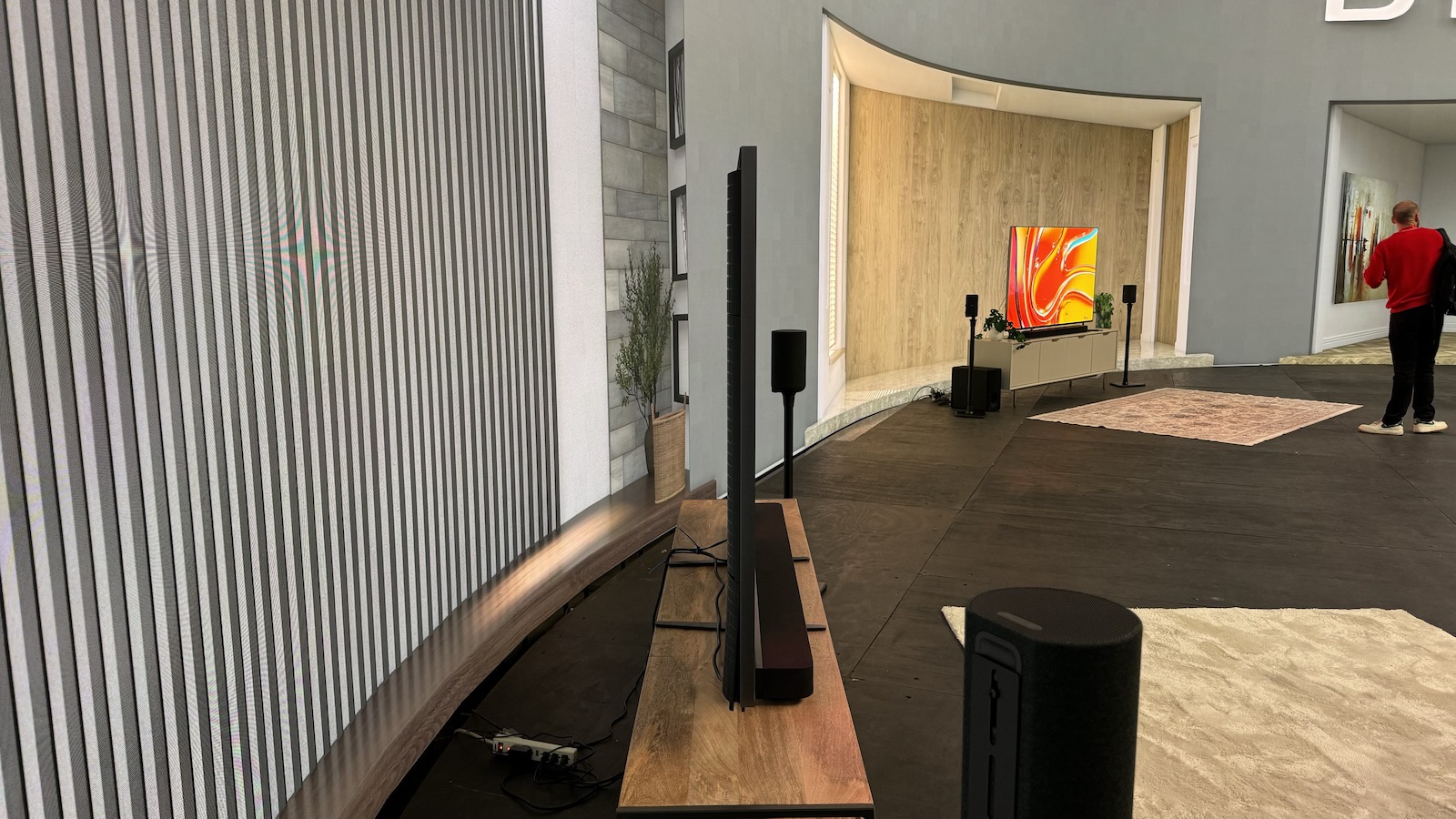
Sony’s recent TV design approach has been all straight edges and pointy angles, and the Bravia 9 deviates from this path not one bit. It’s quite an imposing TV, too, with a relatively thick chassis, though the rear is flat for neater wall-mounting and the bezels around the screen are nice and thin.
The TV’s feet can be positioned either at the extremes of the bottom edge for a super-wide stance or much closer to the centre for a more compact footprint, and they can be reversed and installed in such a way as to create space beneath the display’s bottom edge for a soundbar.
Features
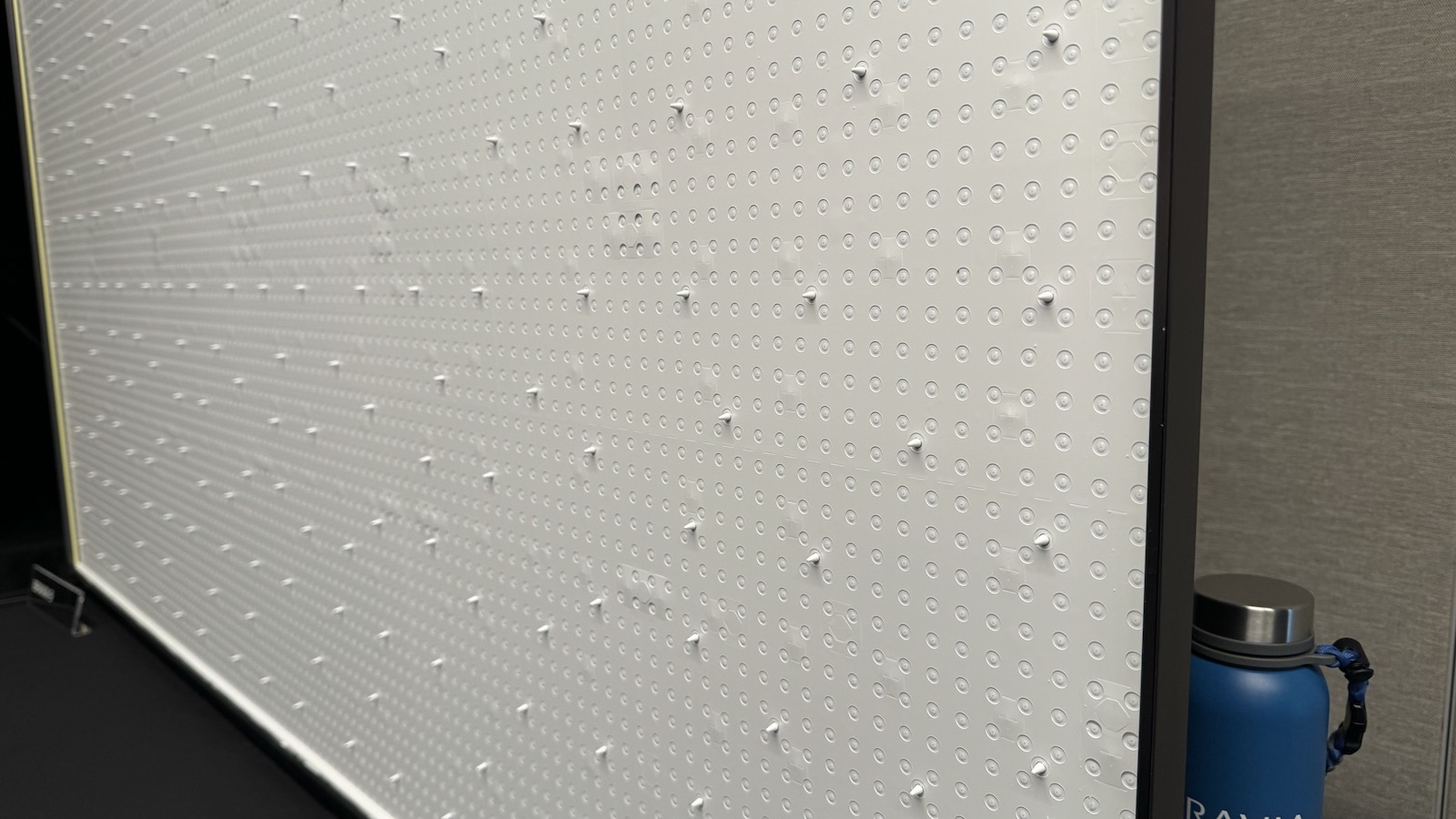
Of course, the big news here is the Bravia 9’s fancy new backlight, pictured above. I went into this in great detail in my report on the prototype backlight tech, and it appears to be more or less unchanged for the final Bravia 9 TV. The basics are that it uses a tiny, apparently revolutionary new driver to control the brightness of the backlight’s Mini LEDs in a far more granular manner than other TVs can manage. Each LED driver controls six ‘channels’, each of which consists of four LEDs. Each of these ‘channels’ can essentially be thought of as an independent dimming zone.
Sony won’t confirm the number of individual zones that the Bravia 9 has, but if my quick counting of the LEDs and drivers of the exposed backlight of a 75-inch prototype is correct, it has 7680 individual LEDs, 320 LED drivers and 1920 independent dimming zones. These numbers will decrease and increase proportionately for the 65-inch and 85-inch versions of the Bravia 9 respectively, but the density of LEDs, drivers and zones will be the same on all models.
1920 dimming zones is a huge jump up from the X95L, the 65-inch model of which has around 480 dimming zones according to our count, so should have somewhere between 650 and 700 in 75-inch guise. Sony is at pains to state, though, that while the increase in the number of dimming zones is of course a big deal, it’s the LED drivers’ ability to subtly control the current going to – and therefore the brightness of – each zone that makes the introduction of this new backlight such a landmark moment. This doesn’t just affect contrast, either, but also power consumption, with Sony claiming that the Bravia 9 is 30 per cent more efficient than the outgoing X95L.
This huge increase in dimming zones coincides with a big increase in brightness. Sony doesn’t go into specific nits figures, but a demo that I’ll detail shortly confirmed that the Bravia 9 will hit around 4000 nits – a huge figure that dwarfs that of not only the brightest new MLA and QD-OLEDs, but also flagship Mini LED models such as Samsung’s QN900D.
As mentioned, Sony claims that the TV’s ability to go so bright is partly so that it’s capable of accurately recreating 4000-nit movies – which are currently very few and far between but which Sony believes will increase in number in the coming years – and partly so that it can raise the brightness of the content we currently watch to maintain impact in real-life viewing conditions with ambient lighting. To that end, there is, of course, automatic optimisation of brightness, colours and contrast built into the set’s XR Processor. In a similar vein, the Bravia 9 also features what Sony refers to as X-Anti Reflection and X-Wide Angle, with the former designed to reduce the impact of reflections on the screen and the latter to reduce the impact of viewing the TV off-axis.
This year’s XR Processor also features expanded versions of existing features such as ‘Scene Recognition’, which can apparently now better identify and reproduce trees, and Face Detection, which can now discern faces from the side, close-up and in crowds.
As with previous Sony models, the Bravia 9 supports the HLG, HDR10 and Dolby Vision formats, but not HDR10+. It’s a mild disappointment that the TV doesn’t support all HDR formats when rival models from the likes of Panasonic and Philips do, but it is in truth very easy to live without HDR10+.
Vaguely contradictory to its approach to HDR formats is its approach to picture presets. Sony has long had loads of these, including two for specific streaming services in the form of Netflix Calibrated Mode and Bravia Core (soon to be Sony Pictures Core) Calibrated Mode, and now it’s adding, in conjunction with Amazon, Prime Video Calibrated Mode. In fairness, this does sound more useful than many similar modes in that it apparently automatically adapts to different content types, including sport. This will be an interesting feature to test once we have a final sample in for review.
As is the norm for Sony TVs, the Bravia 9 will feature the Google TV platform, which at this point is very well-appointed with apps and pretty good at personalised content recommendations, but less slick than the bespoke platforms offered by LG and Samsung. Interaction will be via the new ‘Eco Remote’, which looks and feels much like the dinky little remote of last year but is made of 80 per cent recycled materials and features an integrated rechargeable battery. The previous model’s backlit buttons and useful finder function make welcome returns.
On the gaming front, the Bravia 9 supports 4K/120Hz, VRR and ALLM, plus Dolby Vision gaming right up to that 4K/120Hz limit. Sony’s ‘Perfect for PlayStation 5’ programme continues, too, so the console will automatically select HDR settings based on its knowledge of the TV – though with previous models we have found it necessary to slightly adjust the automatically selected settings in order to get the very best gaming picture quality.
Far more frustrating than that, though, is the fact that the Bravia 9 still has just two HDMI 2.1 sockets that can handle 4K/120Hz. And, yes, one of those is the eARC port, which you will need to use for your sound system should you choose to connect one. LG and Samsung have been selling TVs with four HDMI 2.1 sockets for over five years, so the fact that Sony is still behind in this regard is maddening – though it is worth noting that most other brands’ TVs have the same limitation.
Picture
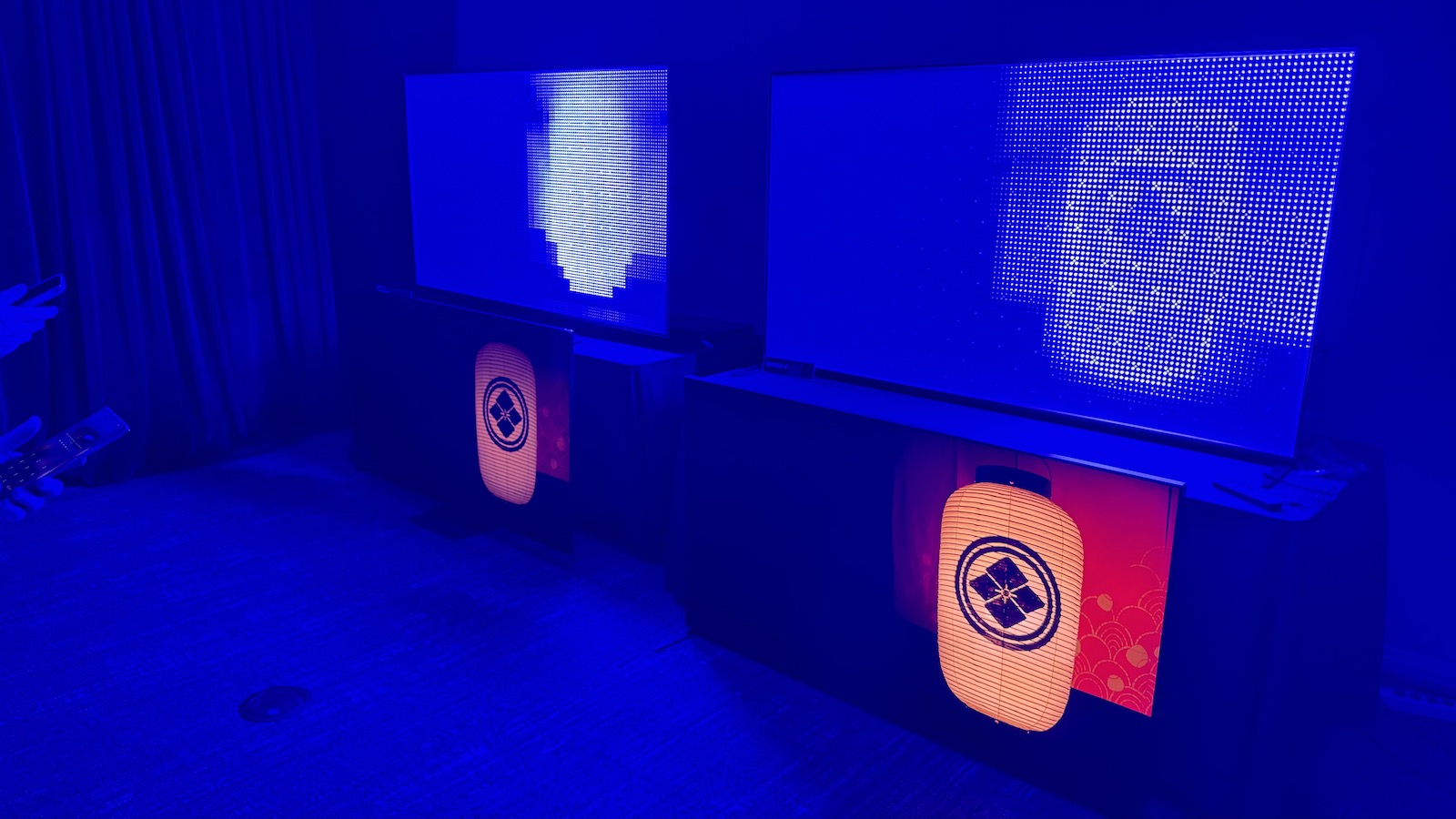
As it did during the backlight session in Tokyo last year, Sony once again began its picture presentation with a demo of the Bravia 9 with the LCD layer removed so that I could see the ‘naked’ backlight at work. If this sounds weird, it is, but it’s also fascinating and provides a great illustration of the upgrade here. Even with no LCD layer to provide colours, edges or details, each specific object shown is easy to discern from the backlight alone. In fairness, a Samsung QN90C, also disrobed for comparison, does reasonably well here, too, but it paints in broader, less nuanced strokes, and smaller, less defined objects are much harder to make out.
As I was in Tokyo last year, during this demo I was once again struck not only by the subtle gradients of light produced by the different LEDs (the driver can exert 22-bit control over each ‘channel’) but also by the large and very defined areas of black between the objects revealed by the backlight. The QN90D's light fades more gradually at the edges of the objects, providing a less definite transition between light and dark.
Switching to a demo of fully clothed TVs, and a comparison between the Bravia 9 and the Samsung S95C is fascinating. While the result will have likely been skewed by the ambient light in the room, it’s still impressive that the backlit Bravia 9 seemed to get very close to the QD-OLED for black depth while providing brighter and more insightful highlights. With an image of a brightly lit blue flower, the Bravia 9 did a much better job reproducing the light shining through the delicate, translucent petals, which the S95SC made look more opaque.
To highlight the Bravia 9’s peak brightness superiority, Sony next had it, the X95L, Samsung S95C and Sony’s new 4000-nit mastering monitor display a series of coloured test patterns consisting of concentric rings at different, labelled brightness levels going right up to 4000 nits. Other than some slight clipping in the 2000-4000-nit jump with the red pattern, the Bravia 9 was able to reproduce every step up to the 4000-nit peak. Only the mastering monitor could handle every step in every colour and neither the X95L nor S95C could get close.
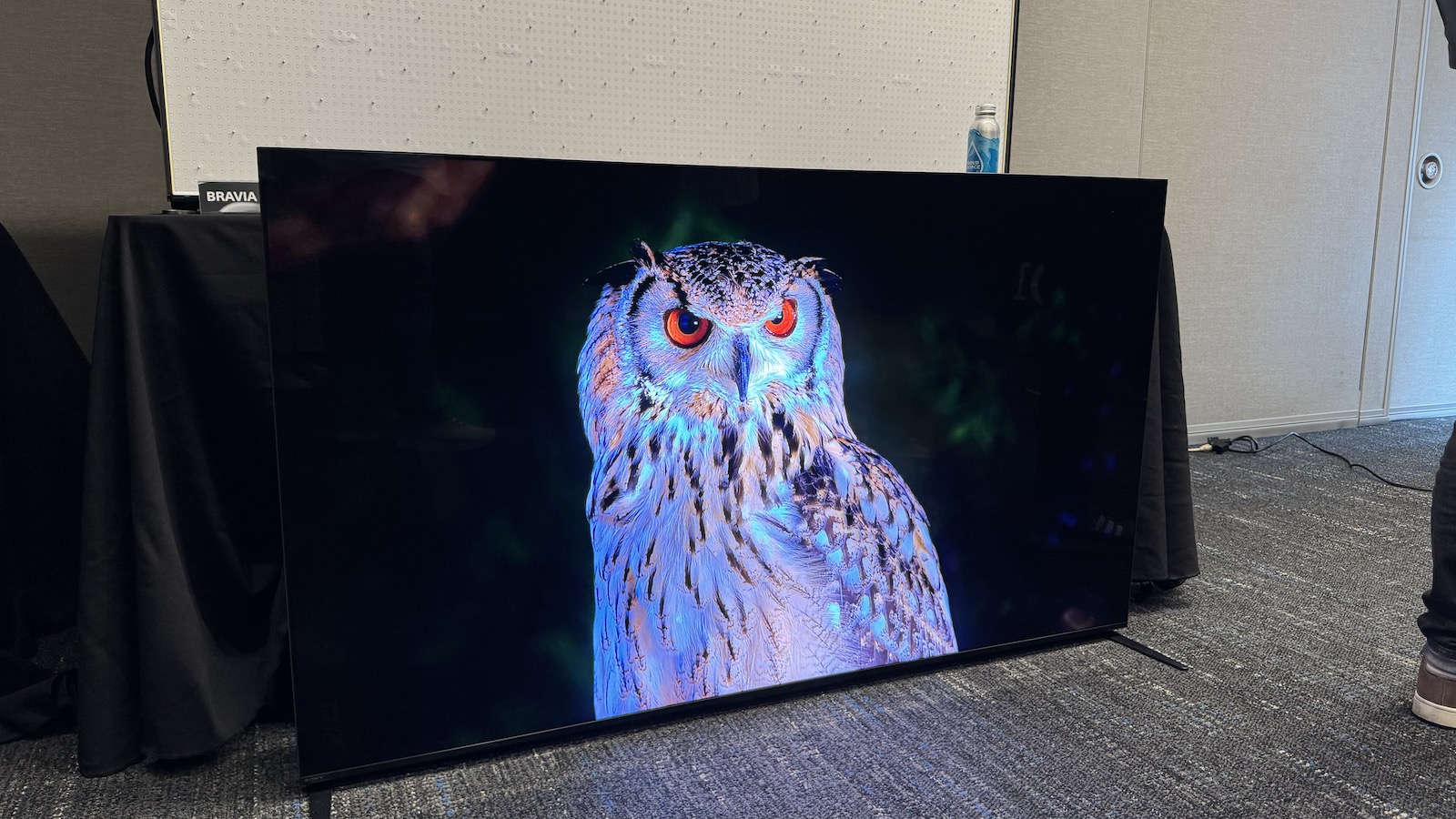
In a demo of real content – a bright sunset – this manifested as a much more detailed reproduction of the brightest parts of the picture, such as the sun itself and the nearby clouds, which lacked definition, structure and shading via the X95L and S95C. Bright colours via the Bravia 9 were terrifically vivid and punchy in a way that neither of the other consumer sets could manage, too.
That said, while the Bravia 9 was the only TV that could get close (very close, in fact) to the mastering monitor for brightness, I actually felt that the S95C at times got closer to it for colours. This wasn’t by a large margin, but in mid and dark tones the S95C and mastering monitor looked richer and deeper in colour and I found myself slightly wishing that the Bravia 9 had the additional depth and solidity that you get from OLED (and the mastering monitor’s unique, dual-layer LCD panel).
It’s also worth noting that while very consistent at wide angles compared to most backlit TVs, I did notice a small amount of colour de-saturation when viewing the Bravia 9 off-axis – as well as a smidge of blooming, which is virtually non-existent when face-on with the TV.
While the demonstrations were focused on brightness, colours and contrast, it’s worth noting that the Bravia 9 also looked terrifically sharp and detailed with the footage used, and while there weren’t any really stern tests of motion, I saw nothing to suggest that Sony’s processing prowess has in any way diminished.
Sound
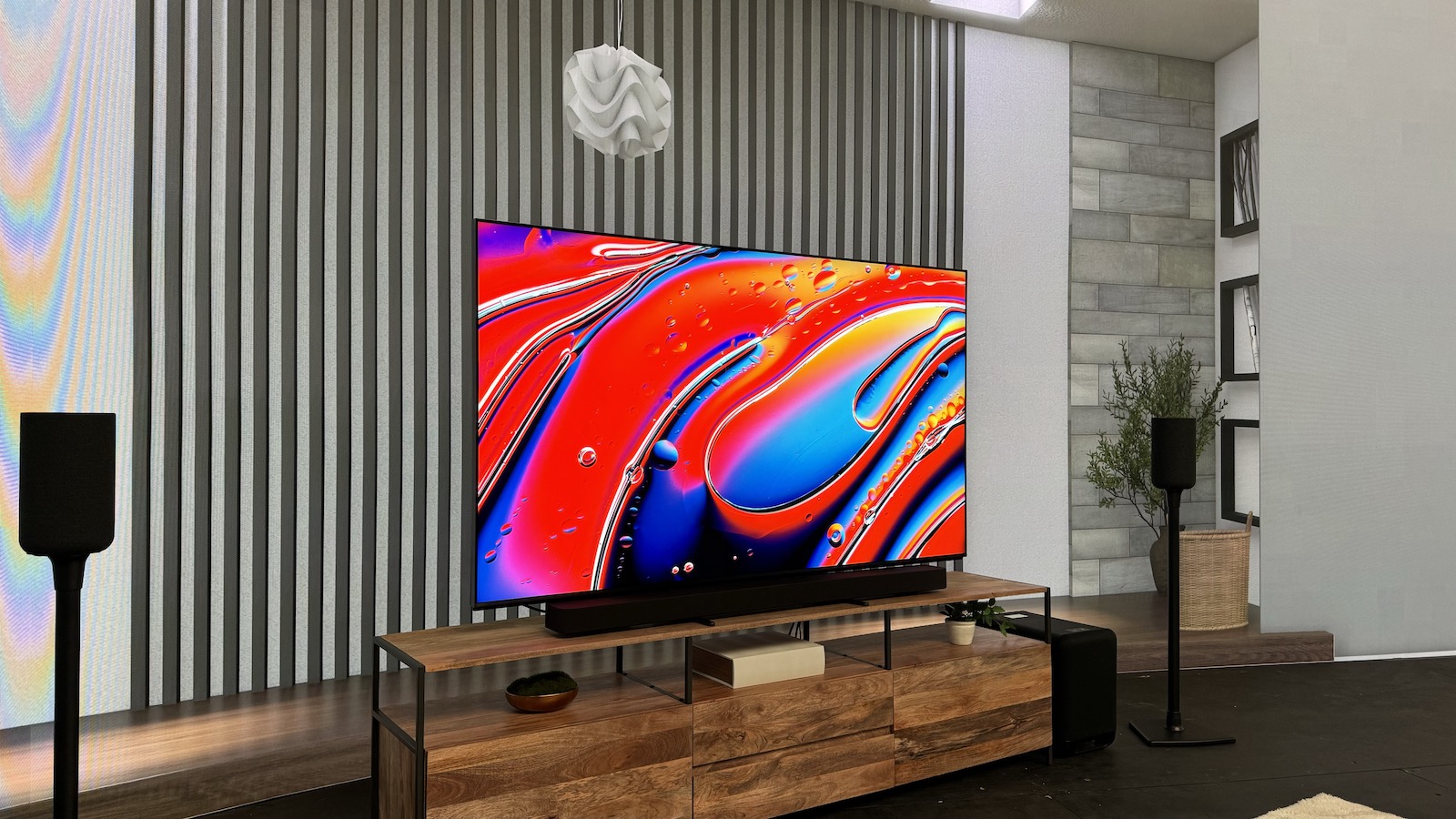
While Sony’s OLED TVs primarily create sound through the use of actuators that vibrate the whole screen, this isn’t possible with a backlit TV, so the Bravia 9 features what Sony refers to as Acoustic Multi Audio+. This name has been used before, but the Bravia 9’s implementation is different to that of previous models in that it features (in a claimed industry first) beam tweeters along the top as well as frame tweeters on the sides, two front facing drivers towards the bottom and dual bass drivers on the rear. The overall aim is to replicate the sound-from-screen effect that you get from the company’s OLED models. In total, Sony says the system has a power output of 70W, which is pretty hefty by TV standards.
Acoustic Centre Sync, which allows the TV to sonically integrate with a compatible Sony soundbar, makes a predictable return here, and Sony says it has been improved to produce 'more natural, accurate sound location'. In truth, our issue with Acoustic Centre Sync has been more focused on tonal than spatial integration, but it will be interesting to give this upgrade a test in our full review.
Another new/upgraded feature is Voice Zoom 3, which uses AI to identify and isolate dialogue so that it can be boosted (or lessened) without harming the rest of the sonic presentation. I was given a quick demonstration of this on one of Sony’s new soundbars and found it to be pretty impressive, but I can’t report on its effectiveness with the TV’s own speakers.
In fact, I can’t really report on the Bravia 9’s sound quality at all, as it was barely touched upon during our demo sessions. This is just one aspect of the TV’s overall performance that will have to wait until we’ve had it into our own test rooms for a full test.
Verdict

The Bravia 9 is a huge deal. Sony is betting big on a brighter future for movies and, to be frank, a flood of 4000-nit films seems far from certain. Whether there’s a need for a TV this bright is debatable, then, but that doesn’t mean there isn’t a desire for it.
During the demo sessions, the Bravia 9 knocked my socks off with its punch, highlight detail, bright colours and contrast, yet it always maintained that trademark Sony cinematic authenticity. It does things that no OLED TV can – and perhaps never will – and that makes it a thrilling proposition. Equally, there are some areas in which an OLED will still beat it.
We won’t pass judgement on the Bravia 9 until it’s been through our comprehensive, comparative in-house testing process, but at this stage it’s surely one of 2024’s most exciting, and controversial, new TVs.
MORE:
Here's our Sony Bravia 8 hands-on
Check out the new Bravia Theatre Bar 9 soundbar and Bravia Theatre Quad wireless speaker system
These are the best TVs you can buy right now







